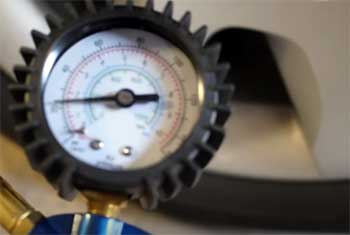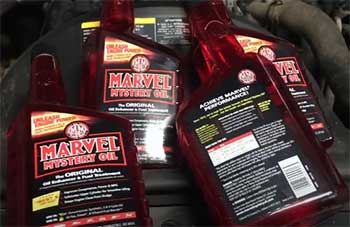If you’ve ever woken up on a chilly morning to find your tire pressure light glowing on your dashboard, you’re not alone. It’s one of those seasonal mysteries that many of us face, but understanding why it happens can save you a lot of headaches and maybe even some cash.
So, let’s check why tires lose pressure in the cold and what you can do about it. This guide will break down the science behind it in an easy-to-understand way, making sure you’re prepared for those frosty mornings.
Understanding Tire Pressure Basics

Before we get into the nitty-gritty of cold weather and tire pressure, let’s cover the basics.
Tires are designed to hold a specific amount of air pressure, usually measured in pounds per square inch (PSI).
This pressure is crucial because it ensures that your tires make proper contact with the road, providing the grip and stability you need while driving.
Tire pressure isn’t just about safety; it also affects your car’s performance and fuel efficiency. Properly inflated tires wear more evenly and last longer.
Plus, they can save you money on fuel because under-inflated tires create more rolling resistance, which means your car has to work harder and burn more fuel.
The Science Behind Air Pressure And Temperature
Here’s where things get a bit scientific but stick with me; it’s not too complicated. Air pressure inside your tires is affected by temperature due to the principles of physics.
According to the ideal gas law, when the temperature drops, the pressure inside a contained space (like your tire) also drops.This happens because air molecules move more slowly at lower temperatures, taking up less space and exerting less pressure.
For every 10 degrees Fahrenheit drop in temperature, your tire pressure can decrease by about 1 PSI. So, if it’s 70°F today and drops to 30°F tonight, you could lose around 4 PSI overnight.
Cold Air Shrinks Tire Pressure
You might wonder, why does this matter so much? Well, driving on under-inflated tires can be dangerous. It can lead to poor handling, decreased braking performance, and even tire blowouts. On top of that, it reduces your gas mileage. So, keeping your tires at the correct pressure isn’t just a minor detail; it’s crucial for your safety and your wallet.
Let’s look at an example. Imagine your car’s recommended tire pressure is 35 PSI. You’ve got your tires perfectly inflated at that level when it’s 70°F. Overnight, the temperature plummets to 30°F. By morning, your tire pressure might drop to 31 PSI. While 4 PSI might not seem like much, it can make a noticeable difference in your car’s performance.
The Impact of Cold Weather On Tire Components
It’s not just the air inside your tires that reacts to the cold. The materials that make up your tires—rubber and other compounds—also become stiffer and less flexible in lower temperatures. This stiffness can cause minor leaks around the tire bead or valve stem, contributing to further pressure loss.
Additionally, if your tires are older or have minor damage, the cold can exacerbate these issues. Cold weather might make existing small cracks or punctures worse, leading to more significant leaks. Regular tire maintenance becomes even more crucial as temperatures drop.
[su_note]Also Read: What are the major tires problem & issues?[/su_note]
How To Maintain Tire Pressure In Cold Weather

Now that we understand why tire pressure drops in the cold, let’s talk about what you can do to keep your tires properly inflated throughout the winter.
- Check Tire Pressure Regularly
Make it a habit to check your tire pressure at least once a month, and especially when the temperatures start to fall. Remember, it’s best to check the pressure when your tires are cold—before you’ve driven more than a mile. This will give you the most accurate reading.
- Use a Reliable Tire Gauge
Don’t rely solely on your car’s tire pressure monitoring system (TPMS). While it’s helpful, it often only alerts you when the pressure is already significantly low. A good-quality tire gauge will give you an accurate reading and help you stay on top of your tire maintenance.
- Inflate Tires to the Recommended PSI
Always inflate your tires to the manufacturer’s recommended PSI, which you can usually find on a sticker inside your car door or in the owner’s manual. During colder months, you might want to add a couple of extra PSI to compensate for the temperature drop.
- Consider Nitrogen Inflation
Some drivers opt to fill their tires with nitrogen instead of regular air. Nitrogen is less prone to pressure changes with temperature fluctuations, which means your tires might maintain their pressure better in extreme temperatures. However, this is usually more of a convenience than a necessity.
- Regular Maintenance and Inspections
Make sure to get your tires inspected regularly by a professional. They can check for any signs of wear or damage that might lead to leaks, and they can also ensure that your tires are balanced and aligned properly.
- Warm Up Your Car
While it’s not always practical, parking your car in a garage or a warmer spot can help maintain tire pressure. If you have the option, try to keep your car out of the extreme cold when possible.
[su_note]Also Read: Which Tires you should pick?[/su_note]
Addressing Common Questions and Concerns
You might still have some questions about tire pressure and cold weather. Here are some common concerns and straightforward answers:
Your tire pressure monitoring system is sensitive to pressure drops. In winter, as temperatures fluctuate, your tire pressure can dip below the threshold that triggers the TPMS light. It’s a reminder to check and adjust your tire pressure.
Yes, driving with low tire pressure can be risky. It affects your car’s handling, braking distance, and can lead to tire blowouts. It’s essential to maintain the correct tire pressure for your safety and vehicle performance.
Winter tires are specifically designed to perform better in cold conditions and on snowy or icy roads. They have a different rubber composition and tread pattern that improves traction and safety. If you live in an area with harsh winters, investing in winter tires can be a wise decision.
If you’re traveling to a higher altitude, the lower atmospheric pressure can cause your tire pressure to increase. Conversely, when descending to lower altitudes, tire pressure can drop. It’s always good to check and adjust your tire pressure after significant changes in altitude.
Over-inflating tires isn’t a good solution. While it might seem like a way to counteract the pressure loss, over-inflated tires can lead to uneven wear and reduced traction. Stick to the recommended PSI and check your tires regularly.
Putting It All Together
So, there you have it.
Understanding why tires lose pressure in the cold comes down to basic science and a bit of proactive maintenance. By regularly checking your tire pressure, using the right tools, and taking a few extra precautions during the winter months, you can ensure your tires stay in top shape.
Remember, your tires are the only part of your car that touches the road, so keeping them properly inflated is crucial. It enhances your safety, improves your car’s performance, and even saves you money on fuel. So next time you see that tire pressure light come on during a cold snap, you’ll know exactly what to do.
And always keep in mind, taking care of your tires is just as important as taking care of any other part of your car. With the knowledge you’ve gained from this guide, you’re well-equipped to handle the challenges that cold weather brings to your tire maintenance routine.
Lastly, understanding and maintaining tire pressure in cold weather isn’t just about avoiding that annoying dashboard light; it’s about ensuring your safety and optimizing your vehicle’s performance.
By regularly checking and adjusting your tire pressure, you’ll be ready to face winter roads with confidence. So, next time the temperature drops, you’ll know exactly why your tires are losing pressure and how to keep them properly inflated.
Stay safe and drive carefully!


